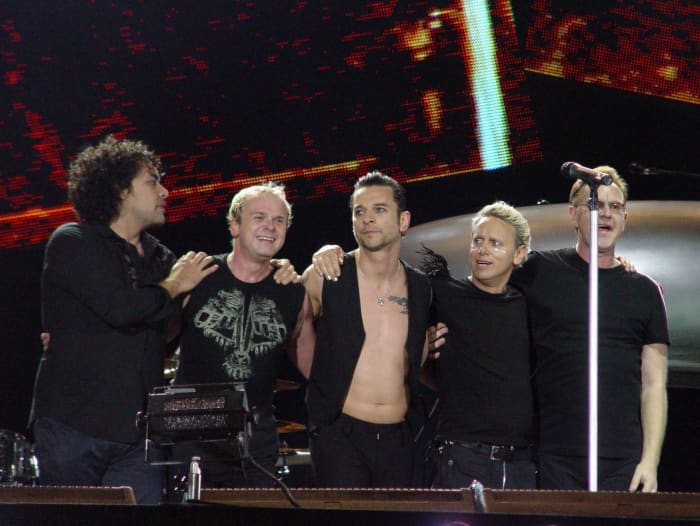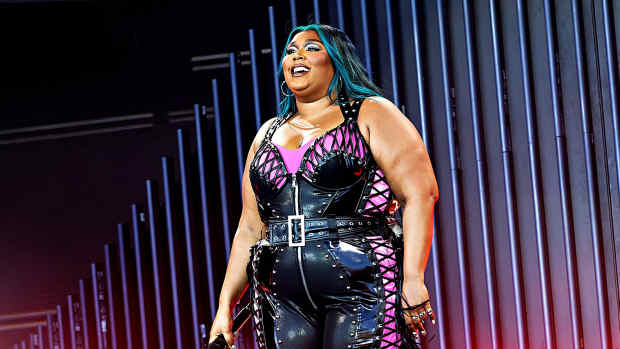100 Best Synth-Pop Bands
The Greatest Synth-Pop Artists of All Time
Although the use of synthesizers became prominent with progressive bands, electronic bands, and disco acts of the ‘70s, the synthpop sound got its distinctive identity in the ‘80s as the New Wave movement transformed the musical landscape in pop music.
The synthesizer-driven sounds augmented with lush textural vocals and dance beats give this genre a unique identity. Although synth-pop musicians have been criticized for having limited musical skills and relying heavily on technology and production techniques to create music, the genre is immensely popular with teens and adults alike.
The list below showcases an epic collection of synth-pop bands from different decades. If you have a view, opinion, or band suggestion, let us know in the comments section.
Top 10 Best Synth-Pop Bands
- Depeche Mode
- Kraftwerk
- Pet Shop Boys
- A-ha
- Erasure
- The Human League
- Orchestral Manoeuvres in the Dark
- Duran Duran
- Eurythmics
- New Order
What Is Synth-Pop?
A subgenre of New Wave music, synth-pop is a musical style that features the prominent use of synthesizers. The characteristic sound that gives this genre its distinguished identity is the primary use of sequencers, drum machines, vocoders, and synthesizers.
The rhythm structure is defined by synthetic sound textures that have a robotic dance beat. Different styles of music are woven polyphonically to reproduce the desired sound with compressed production.
A number of electronic art bands and artists that emerged through the art pop movement started experimenting with polyphonic synthesizers and MIDI to create hypnotic groove-oriented rhythms for dance. This sonic experimentation paved the way for different styles in synth-pop.
Often, sparse arrangements and repetitive rhythms are associated with different acts in this genre. Although, sometimes, the term “electropop” is used interchangeably with synth-pop, the former emphasizes a harder electronic sound.
#11–20
11. Ultravox
12. Soft Cell
13. Owl City
14. Chvrches
15. Alphaville
16. La Roux
Recommended
17. Bronski Beat
18. Goldfrapp
19. Visage
20. Devo
Synth-Pop in the ‘70s
The Mellotron, an electro-mechanical musical instrument which was used by progressive rock musicians in the ‘60s, declined in popularity as the sound of Moog synthesizer came into prominence.
By the early ‘70s a number of art pop bands and progressive rock bands adopted the sounds of the Minimoog, a portable version of the Moog synthesizer that was easy to use during live performances.
As art rock, space rock, and prog rock became widespread in Europe, the diverse Krautrock movement developed in Germany, giving rise to bands and artists that created an experimental blend of sounds that merged electronic music with psychedelic rock, free jazz, and avant-garde.
Bands such as Kraftwerk, Neu!, and Tangerine Dream played a pivotal role in shaping and influencing different styles in synth-rock and synth-pop. The work of Brian Eno had a major influence on musicians associated with ambient and heavy synth-based formats.
A number of electronic art bands and artists came to the forefront with their eclectic brand of synth-heavy music. The Electro-disco genre became hugely popular in mainstream pop in the ‘70s. The programmed beats used by musicians in this genre had a profound influence on synth-pop acts in subsequent decades.
#21–40
21. Yazoo
22. Propaganda
23. Thompson Twins
24. Ladytron
25. M83
26. Art of Noise
27. Frankie Goes to Hollywood
28. Yellow Magic Orchestra
29. Icona Pop
30. The Communards
31. Suicide
32. Talk Talk
33. Future Islands
34. Chromatics
35. Tubeway Army
36. Cut Copy
37. A Flock of Seagulls
38. Tears for Fears
39. Spandau Ballet
40. Heaven 17
Synth-Pop in the ‘80s
A number of bands and artists associated with the genre had tremendous mainstream success in the ‘80s. The music in this decade was dominated by the sounds of synthesizers. Musicians from different genres adopted MIDI technologies and digital audio, which made the entire process of creating electronic sound much easier.
The New Romantic movement that developed in London paved the way for a number of synth artists of the ‘80s. A number of British synthpop artists that became immensely popular in the US due to heavy rotation of their music on cable music channel MTV and on radio stations started being identified as the Second British Invasion.
New Wave and synth-pop structures fused with mellow pop and rock sounds became popular with a number of acts in the ‘80s. A number of bands and solo artists with a hippy-happy dance-friendly sound of synthesizers infused in their songs had a great deal of success on music charts.
Programmed beats and synth sounds with texturally-smooth vocal melodies became the signature identity of many dance acts in the decade. Slickly-crafted synth-pop became a rage with teens all over the world. Indeed, synth-pop in the ‘80s was one of the most significant awakenings in music history.
#41–60
41. Men Without Hats
42. The Buggles
43. Modern Talking
44. Hurts
45. Passion Pit
46. Berlin
47. Hot Chip
48. Anything Box
49. ABC
50. Dead or Alive
51. The Knife
52. Animotion
53. Empire of the Sun
54. Royksopp
55. Neon Indian
56. Crystal Castles
57. The Naked and Famous
58. Information Society
59. The Postal Service
60. Blancmange
Decline of Synth-Pop in the ‘90s
With the dawn of the ‘90s, guitar-driven music came to the forefront. As alternative music dominated the scene, a number of synth acts found it had to sustain the grunge backlash. As alternative and grunge grew in popularity, radio stations started favoring bands from these genres over synth-pop.
While the musical careers of many synth bands ended in the ‘90s, certain bands associated with synth-based music continued with their success by changing their musical direction.
These bands added electronic dance elements with indie landscapes to create a unique blend of dance rock that had significant mainstream success on dance charts, especially in the US.
While record sales of major synth-pop bands of the ‘80s dwindled in the ‘90s, some bands did find success with their singles. A number of British New Wave duos and synth duos that transitioned to dance music had phenomenal mainstream success globally.
#61–80
61. The Fallout Club
62. f(x)
63. When in Rome
64. Tegan and Sara
65. AlunaGeorge
66. Bastille
67. Red Flag
68. Capital Cities
69. Perfume
70. Feathers
71. China Crisis
72. Kon Kan
73. Chromeo
74. Icehouse
75. Gina X Performance
76. Exotic Birds
77. Pvris
78. Donkeyboy
79. Scritti Politti
80. Chairlift
Revival of Synth-Pop Post 2000
As new digital technologies developed in the 2000s, indietronica started taking shape. Musicians in this format started experimenting with electronic sounds and indie sounds using synthesizers, drum machines, samplers, and computer programs.
A great number of bands and artists associated with indietronica produced and released their music independently. Alongside indietronica, the electroclash movement began to gain momentum. Bands in this style of music combined diverse styles of punk, synth-pop, and techno with performance art. The renewed interest of musicians in electronic music and new wave sounds of the ‘80s led to the revival of synth-pop music.
A number of bands and artists post-2000 started incorporating vintage synth sounds in their diverse repertoire of musical styles. Post 2010, a number of solo artists had breakthrough success with their brand of electropop and dance-pop music. A number of female synth-pop acts incorporating a broad spectrum of EDM sounds in their songs had a great deal of success on international music charts.




